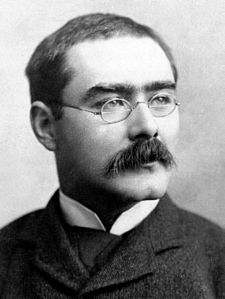Exploratory Questioning and Modelling by Lynda Russell-Whitaker
Constructed questions are essential in successful business development. We need to pay close attention to the language we use in our questioning and the language used by the client in response to these questions. They can give valuable clues.
As mentioned in my article on Active Listening in SpeakUp! #62, questions and listening are inextricably linked. Exploratory questions tend to be open because they are more likely to encourage detailed answers and provide you with the information you need to uncover from your client.
Given that the primary focus of this article is questioning, a good starting point seems to be to spend some time asking ourselves useful questions prior to an important business meeting.
Frequently used in NLP (neuro-linguistic progamming), this comes under the category of ‘well-formed outcomes’. In order to produce a well-formed outcome, we need some well-designed questions. These might be something like:-
’what do I want to have achieved by the end of this meeting?’ or
‘what would a successful result to this meeting look/sound/feel like?
Spend some time reflecting on what that achievement or success looks/sounds/feels like. How will you know whether it’s a successful outcome? What will you see, feel, hear, think? Are there any smells or tastes associated with these successful outcomes? Make a note of all of this information.
Now you have clarity on what you intend to achieve from that meeting, it’s time to focus on the kinds of questions you want to ask your client in order to uncover their need (which may be neither clear not known to them) and their desire for a solution.
Those of you who have worked with GPB or been reading SpeakUp for some time will no doubt be aware of ‘Kipling’s Six Honest Serving Men’.
Where? What? When? How? Who? (Why?) (Which?)
It’s worth being judicious with the ‘why?’ question because it can put someone on the defensive. These can be useful for eliciting values, but not necessarily solutions. Questions starting with ‘how?’ are usually more useful in problem solving because they help uncover the structure of a problem.
In my previous article on active listening, I outlined the funnel method, where you might (but not necessarily) begin with one or two closed, clarifying questions. They can be very direct, such as ‘Do you have a pitch you need to prepare for in the next two weeks?’ or something like ‘in your role are you often expected to present confidently in front of groups?’ Hopefully, you now have some more information. You can work with this to create more probing-style questions, building on what you’ve learnt in the previous answer. If you’ve been paying attention to their language, you can use their preferences when constructing you next question. If they are more visual, and you tend to be more auditory, you might want to adapt your language to say ‘I see your point ’ rather than ‘I hear what you’re saying’.
As you progress in the conversation, gaining more information and insights into your client’s needs and expand on what has already been said, you can ask closed questions based on a choice of alternatives you provide (leading questions). Closed questions can then be used to confirm, clarify or establish the client’s desire for a solution.
If you feel that this is an area where you need some practise, it is worth brainstorming the kinds of questions you might want to use and rehearsing with a colleague. As with pre-pitch calls (see EP’s article in this issue), this technique of doing ‘mocks’ can feel odd. But if you haven’t already done this kind of exercise, you’ll be pleasantly surprised at the kinds of questions that get unearthed that can be very valuable in the live pitch or business meeting.
Another way of improving your success rate in a business meeting or a pitch is what is known in NLP as modelling. This tool encourages you to analyse someone who is outstanding in the area you want to be successful in and adopt their strategies yourself.
Leading international NLP trainer, consultant and author, Joseph O’Connor, in ‘The NLP Workbook’ outlines the NLP strategy for modelling highly successful people:-
An NLP model normally consists of:-
- the mental strategies
- the beliefs and values
- the physiology (external behaviour)
- the context in which the person being modelled is operating.
You can also model your own behaviours from one area where you are very successful to another where you aren’t as effective. It’s similar to my earlier paragraph about well-formed outcomes. You recreate something very vividly. For example, if you play a musical instrument well and are able to learn and master new pieces relatively easily, you can use modelling to analyse those strategies and apply them to an area you want success in, such as preparing a delicious, nutritious meal that delights your friends and family.
EXERCISE:
- Who do you know who is very successful in business development or sales?
- What is their optimal state when in a business meeting (what do they think, feel, do, see, hear, etc)?
- What, if any, other strategies do they use?
- What beliefs do they have about themselves and the outcome of their calls or meetings?
- What kind of questions do they ask clients before, during and even after, a business meeting?
Once you’ve elicited this information, start applying it to yourself using the NLP model described above. To paraphrase the co-creator of NLP, Dr Richard Bandler: ‘there is no such thing as a non-resourceful person, just a non-resourceful state’.
Whether it’s in business development, fabulous cooking or brilliant piano playing, wishing you joy and success!=


